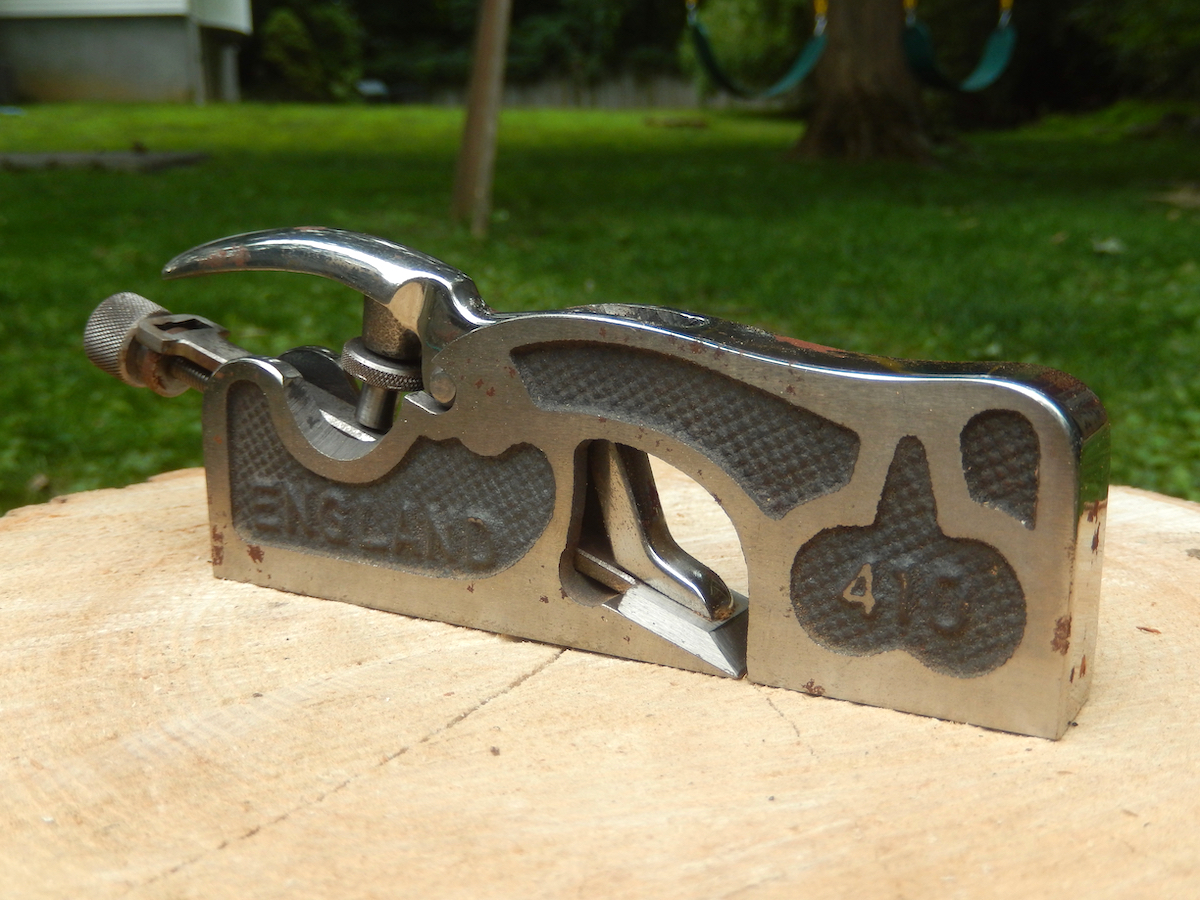We may receive a commission when you use our affiliate links. However, this does not impact our recommendations.
 A few years ago, my friend Cambell Albritton gifted me with a small Clifton #410 shoulder plane that he no longer needed. The plane was still in its original box but unfortunately developed a few areas of rust both on its sole and sides.
A few years ago, my friend Cambell Albritton gifted me with a small Clifton #410 shoulder plane that he no longer needed. The plane was still in its original box but unfortunately developed a few areas of rust both on its sole and sides.



The Clifton # 410 plane is one of the best small metal shoulder planes out there, but even a high-quality tool might need some love and care to bring it to optimal performance. Because shoulder planes are used to micro-trim rabbets and tenon shoulders neatly to fit into mortises and grooves, they need to be set up to a high degree of precision. Flattening the sole, tuning the blade, providing lateral space for the blade’s movement, and other delicate tuneup missions are routine initiation steps necessary for those shaving machines to work smoothly and produce uniform shavings.
In this and the following entry, I will show how I spruced up and fine-tuned the Clifton 410 and turned it into an optimal shaver.

Rust
The first problem I detected on the plane was the build-up of red-orange rust clouds, mainly on the sole and some on the shoulders.
I have discussed ways to remove rust in previous entries, including mentioning Naval Jelly and bronze steel wool as gentle media that, unlike sandpaper or steel brushes, will not hurt or alter the cast iron surface geometry. Thin-fluid chemical rust removers such as Evapo-Rust would also be kind to the tool but will require submerging the plane’s sole for a few hours or days in them. However, the gelly (a fluid chemical remover in a gel form) would not drip and act only on the corroded areas. Since I wanted to reduce any changes to the shole’s flatness to a minimum, I decided to go with the jelly.

Appling the Naval Jelly


After rinsing the Naval Jelly with a damp cloth, I brushed the surfaces with a brass brush.
Shoulder’s rust “touchups.”
The rust in a few areas on the upper shoulders was less severe, so I used fine diamond stone. I worked carefully with a flat fine-diamond paddle on the rust-blemished areas and quickly eradicated any traces of corrosion. Then I used a piece of leather and a honing compound to polish those surfaces. Bringing cast iron and carbon steel to a mirror-sheen-like surface is a winning strategy for negating rust. The smoother the surface, the more difficult it is for rust to infiltrate.




Fine sandpaper followed by a buffing leather strop to polish the surface.
 Other Surfaces
Other Surfaces
I used sandpaper on surfaces such as the undulating top where surface flatness or trueness was not paramount.


Stay tuned for next time, as I will discuss the plane’s blade.
Here are some supplies and tools we find essential in our everyday work around the shop. We may receive a commission from sales referred by our links; however, we have carefully selected these products for their usefulness and quality.



 Other Surfaces
Other Surfaces




